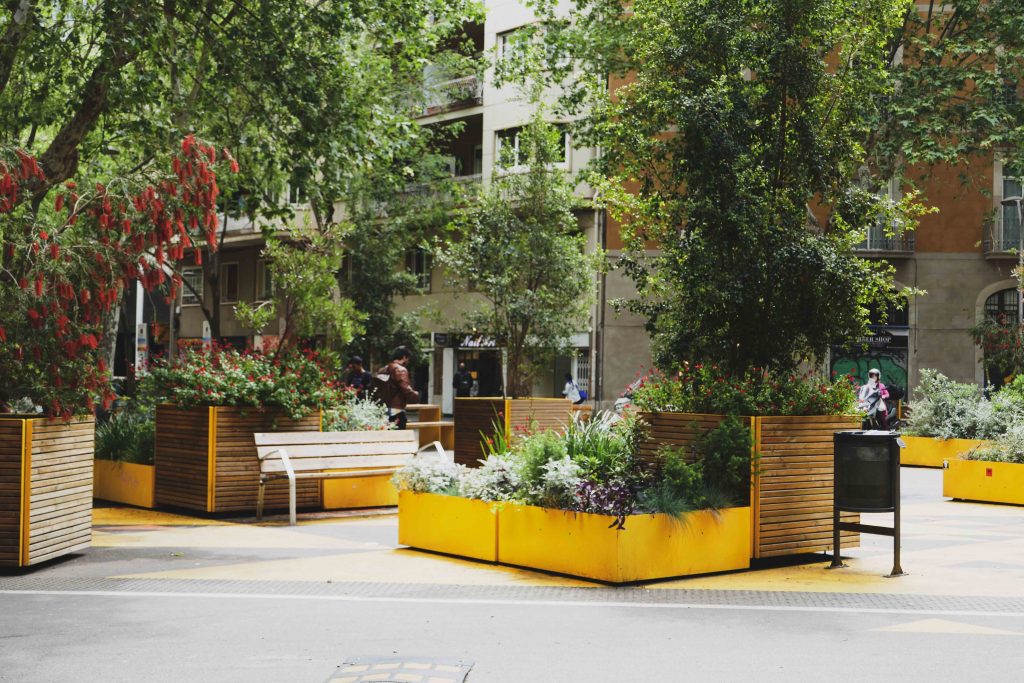The Eixample urban grid is responsible for Barcelona’s success as a model city. Contrary to what is often said, gentrification in Barcelona is much less severe than in other cities, largely thanks to the Eixample.
In terms of retail, the Eixample functions as a continuous carpet of ground-floor retail stores lining the four facades of each block. The Eixample we enjoy today is not the hygienic city or ville radieuse that Cerdà, and later Le Corbusier, proposed. Fortunately. Barcelona wouldn’t be “the best retail store in the world” without a four-facade, four-chamfered Eixample layout. With over a thousand retail stores per square kilometer, to find a similar commercial phenomenon to that of the Eixample you would have to go to Manhattan, where there is a similar density.

Without the Eixample, or with an Eixample of the hygienic or radiant city type, with garden courtyards and only two facades per block, Ciutat Vella, the most successful retail area and with the highest rental prices in Barcelona, would still be much more stressed and gentrified. If you don’t believe me, look at London. With less than 200 establishments per square kilometer, London has rental prices for housing that, in the centrally located retail areas, coincidentally the most gentrified, can reach 20,000 euros per month for an 80 m² apartment. Yes, 20,000 euros per month. So we can say that the Eixample is a distribution optimizer for development and, therefore, for moderating the impact of gentrification.
And what will happen to the Eixample when the superblocks are implemented? It depends. The first version of the superblocks was limited to organizing traffic with an orthogonal mesh of public transport, balanced and rational. It was a mobility plan that could favor better accessibility for public transport users throughout the mesh, regardless of where they came from or whether they lived in Barcelona or not.
Progressively, however, this plan has been moving towards something else. The superblocks that are now proposed go far beyond this, delving deep into the realm of urban utopia… of the ville radieuse. Perimeter streets for inter-block vehicle and pedestrian traffic. Interior streets for residents, like a block courtyard. Bollards and heavy urban furniture at access points, chaotic and poorly directed spaces inside. The result seems to be a privatization of public space, a communalization on a neighborhood scale, if you will. On an enormous scale.
How does the superblock affect Eixample retail?
With data from a report that we will publish in a few days, which we have compiled from retail composition and real estate offer figures for all of Barcelona, we can tell you that the impact on retail will be significant.
Plain and simple: if the model that is announced is executed, with a “pacified” block interior, only grocery stores, bars with terraces, and little else will remain inside the block. Non-daily and specialized retail, which generates clusters and destination retail and, in sufficient quantity, prevents systematic customers leakage in an area, will have to go to the perimeter of the superblock. The rental price per square meter of retail stores inside the block will fall below the neighborhood average. And, at the perimeter of the superblock, it will skyrocket above the neighborhood average.
If I had a personal equipment store in the Eixample, I would make sure to be aware of the layout of the superblock in my neighborhood and to be in the right place once it is put into operation.
